Choosing the Best Smallest Air Conditioner for Your Camper
When traveling in a camper, maintaining a comfortable temperature is crucial, especially in hot climates. A well-suited air conditioner can make all the difference. However, choosing the smallest air conditioner for your camper requires careful consideration of size, efficiency, and cooling power.
In this guide, we’ll explore why selecting the right size matters and the essential features to look for when choosing a compact camper air conditioner.
Why Size Matters for Camper Air Conditioners
Selecting the right air conditioner size is critical for ensuring optimal cooling without overloading your camper’s power system. A unit that is too large consumes excessive energy, while one that is too small may not effectively cool the space.
1. Energy Efficiency and Power Consumption
Campers rely on battery power, generators, or shore power, so choosing an air conditioner with the right BTU (British Thermal Unit) rating is essential. A unit with excessive BTUs may cycle on and off frequently, leading to wasted energy, while an underpowered unit will struggle to cool the space effectively.
Recommended BTU Ratings for Camper ACs:
- Small campers (up to 100 sq. ft.): 2,500 – 5,000 BTUs
- Medium campers (100 – 200 sq. ft.): 5,000 – 8,000 BTUs
- Large campers (200+ sq. ft.): 8,000+ BTUs

2. Space-Saving Design
Since campers have limited space, a compact air conditioner should be designed to fit into small areas without obstructing movement. Options like window-mounted, rooftop, and portable air conditioners are ideal for space efficiency.
Common compact AC types for campers:
- Portable ACs: Easy to move and store when not in use.
- Rooftop ACs: Great for saving space inside the camper.
- Window ACs: Efficient and ideal for fixed installation.
3. Cooling Performance in Small Spaces
A compact AC unit should be designed for quick and efficient cooling. Advanced models come with smart thermostats, multiple fan speeds, and eco modes to optimize performance.
Key Considerations:
✔ Proper airflow to distribute cool air evenly.
✔ Adjustable thermostat to maintain a consistent temperature.
✔ Dehumidification mode for added comfort.
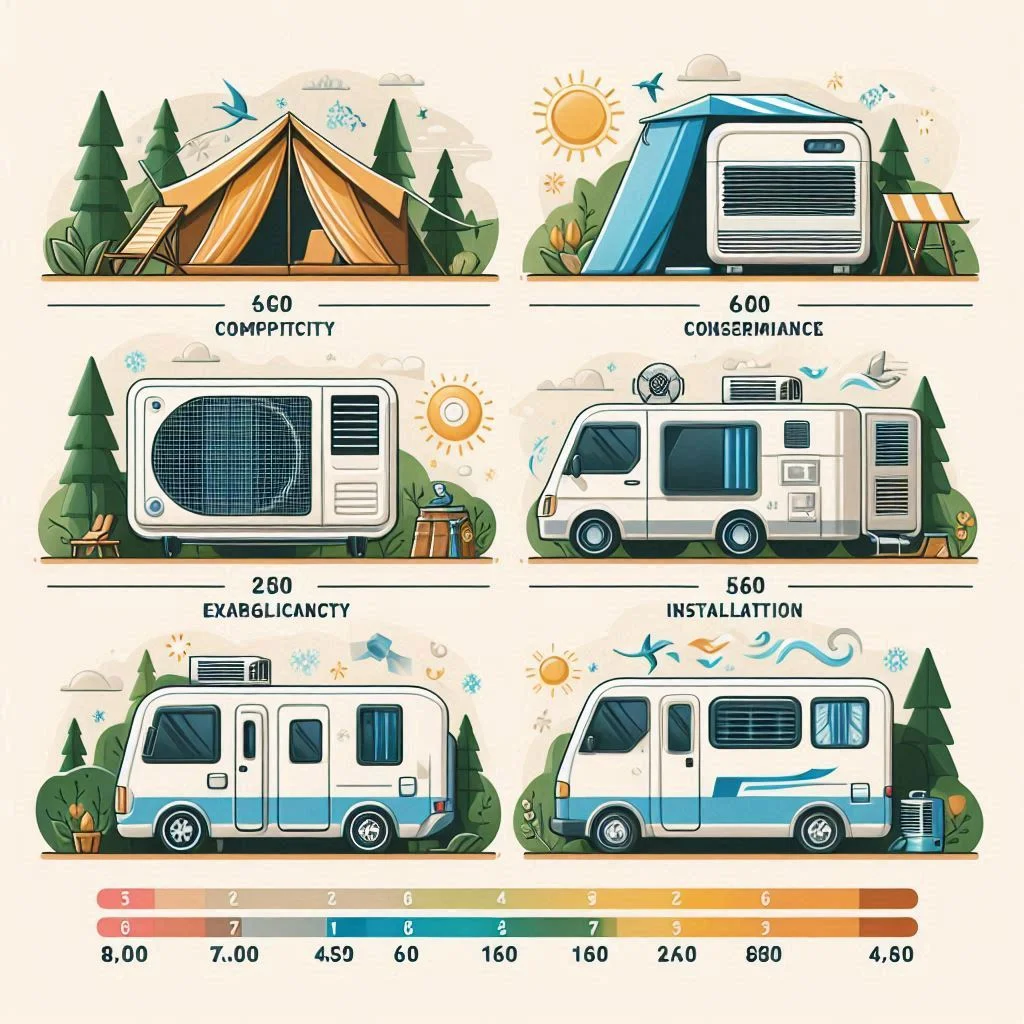
Key Features to Look for in a Compact Camper AC
When choosing the smallest air conditioner for your camper, look for the following essential features to ensure optimal performance and energy efficiency.
1. Power Source Compatibility
Campers have various power sources, so selecting an AC unit compatible with your setup is crucial.
Common Power Options for Small Camper ACs:
- 120V Electric (Shore Power) – Standard power supply when plugged into an RV park or external source.
- Battery-Powered ACs – Ideal for off-grid camping.
- Solar-Powered ACs – Environmentally friendly but requires sufficient panel capacity.
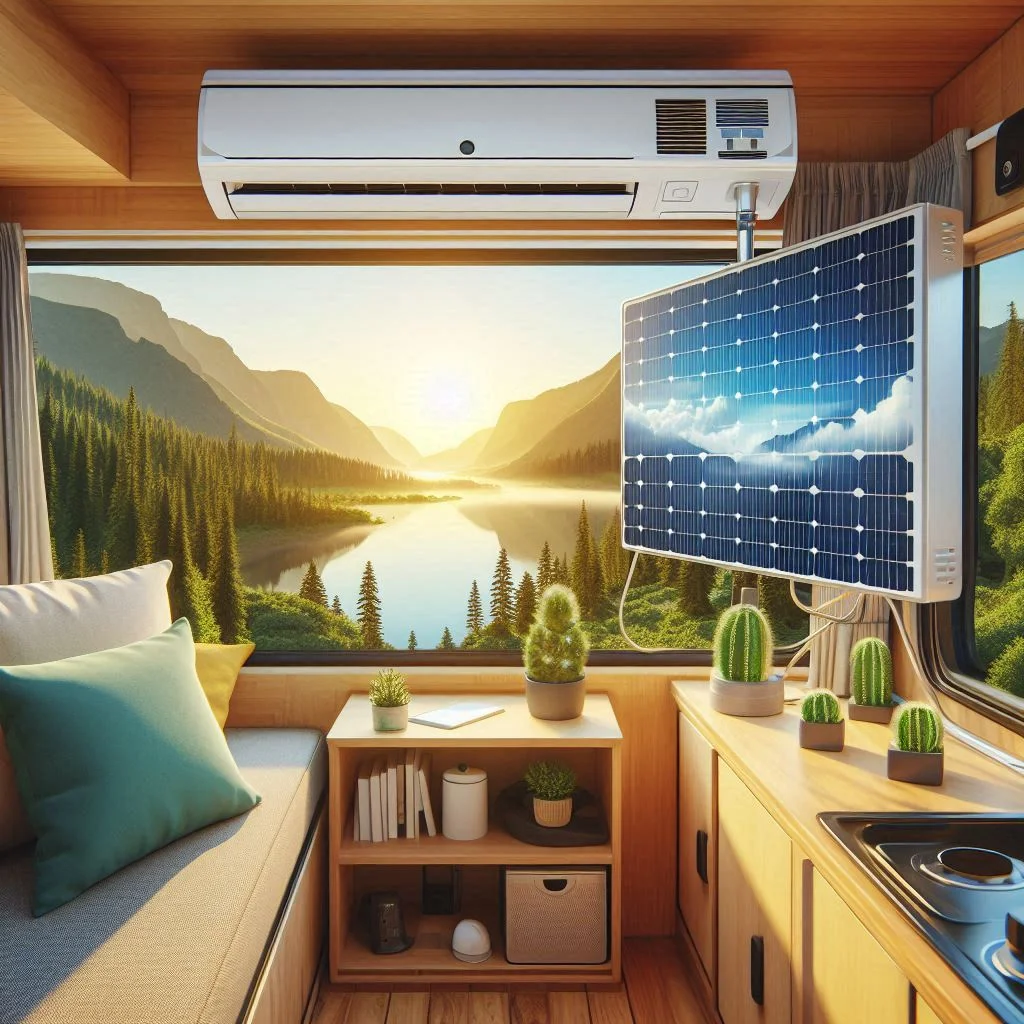
2. Noise Level Considerations
A quiet air conditioner enhances comfort during travel and sleep. Look for units with a noise rating under 50 decibels (dB) for a peaceful environment.
3. Energy Efficiency and Eco Mode
Energy-efficient models with an EER (Energy Efficiency Ratio) of 10 or higher consume less power while providing effective cooling. Features like sleep mode, eco mode, and programmable timers help reduce energy consumption.
4. Portability and Installation Ease
- Portable units are easy to move but require venting.
- Window-mounted units provide permanent cooling without taking up floor space.
- Rooftop models are efficient but may require professional installation.
5. Durability and Weather Resistance
Since campers are exposed to various weather conditions, choosing an AC with weather-resistant materials and UV protection ensures longevity.
Final Thoughts
Selecting the smallest air conditioner for your camper requires balancing size, power consumption, and efficiency. By considering BTU capacity, power source, noise levels, and durability, you can find an AC that keeps your camper cool while maximizing energy savings.
By following this guide, you can make an informed decision that enhances your camper’s comfort, whether you’re camping off-grid or using shore power.
Types of Small Air Conditioners for Campers
When choosing the smallest air conditioner for a camper, it’s essential to consider different types of cooling units available. Each type has unique advantages depending on factors like space, power availability, and installation preferences.
This guide explores the most efficient options, including portable air conditioners, rooftop vs. window-mounted units, and battery-powered or solar-powered choices, helping you select the best solution for your camper.
Portable Air Conditioners for Campers
What is a Portable Camper Air Conditioner?
A portable air conditioner is a compact, freestanding unit designed for easy installation and mobility. Unlike fixed units, it can be moved around the camper as needed and typically requires a simple venting system to expel hot air.
Advantages of Portable ACs for Campers
✔ Easy to Install – No complex setup or permanent modifications required.
✔ Compact and Lightweight – Ideal for small campers with limited space.
✔ Versatile Placement – Can be positioned near beds, sitting areas, or workspaces.
✔ Dual Functionality – Some models offer heating features for winter camping.
Limitations of Portable AC Units
✖ Requires a venting hose to direct hot air outside.
✖ Can take up floor space inside the camper.
✖ Typically less powerful than rooftop or window-mounted units.
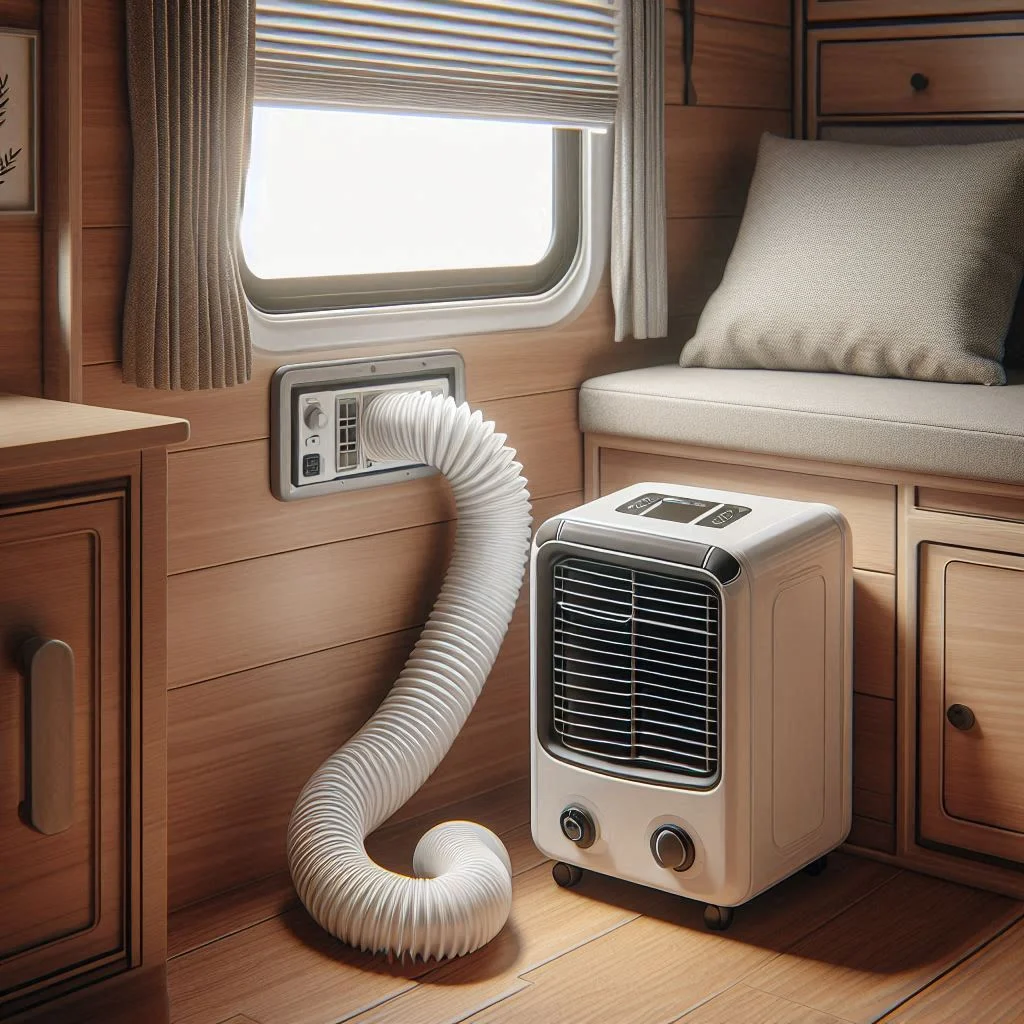
Best Use Cases for Portable Camper ACs
- Campers without permanent AC installation options.
- Short-term cooling solutions for occasional trips.
- Users who want an AC unit that can also be used outside the camper.
Rooftop vs. Window-Mounted AC Units
Rooftop Air Conditioners for Campers
Rooftop air conditioners are installed on top of the camper, providing efficient cooling while saving interior space. These units are often built into larger RVs but can also be used in compact campers.
Benefits of Rooftop AC Units:
✔ Saves Interior Space – No floor or window space is occupied.
✔ Efficient Cooling – Covers the entire camper evenly.
✔ Permanent Installation – Once installed, requires little maintenance.
Downsides of Rooftop ACs:
✖ Requires Professional Installation – May not be a DIY-friendly option.
✖ Higher Power Consumption – Often needs shore power or a generator.
✖ Less Portable – Cannot be moved once installed.
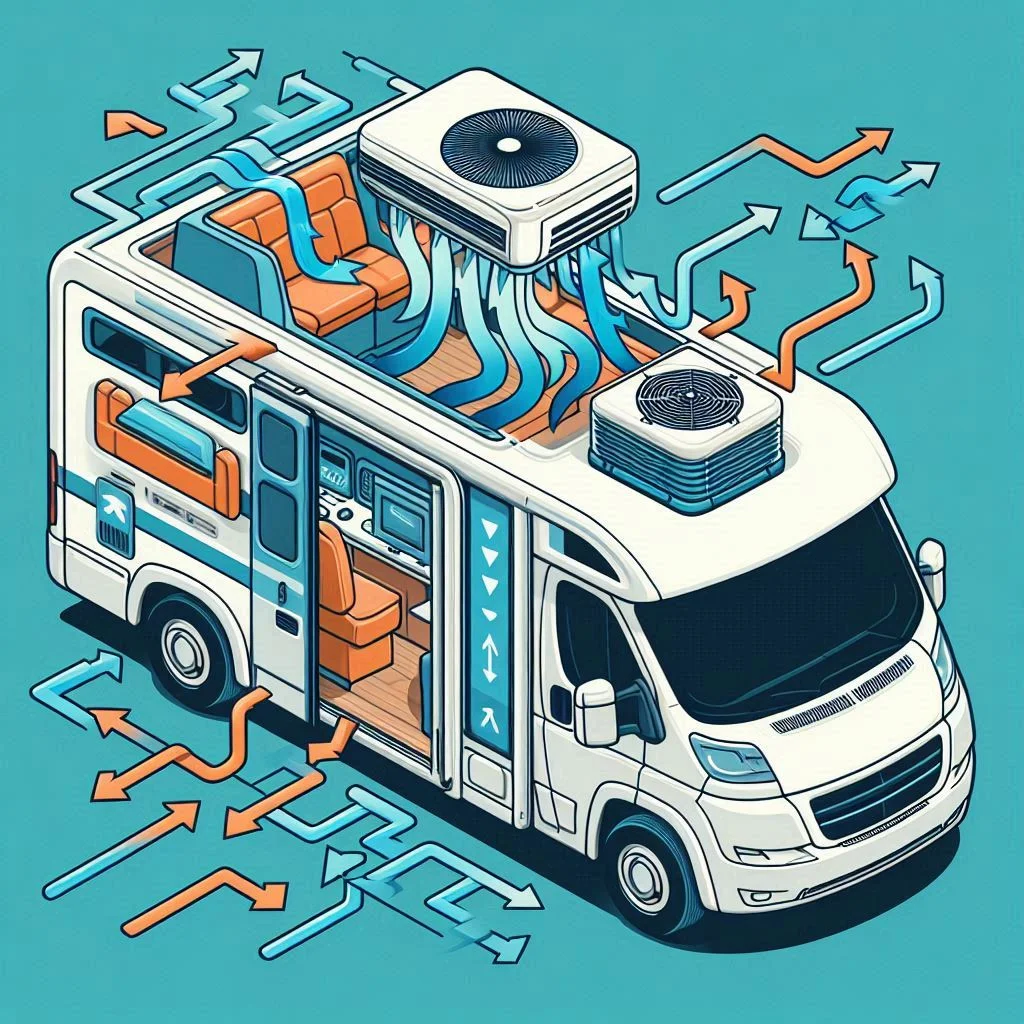
Window-Mounted Air Conditioners for Campers
A window-mounted AC unit is installed in a side window or vent opening, similar to how traditional home window units work.
Benefits of Window-Mounted ACs:
✔ More Powerful Than Portable Units – Provides strong cooling.
✔ Space-Saving Design – Does not take up floor space inside the camper.
✔ Energy Efficient – Many models have high EER (Energy Efficiency Ratio) ratings.
Limitations of Window-Mounted ACs:
✖ Blocks a Window – Reduces natural light and airflow.
✖ Permanent or Semi-Permanent Installation – May require modifications to the camper.
✖ Limited Mobility – Not as flexible as portable ACs.
Which One is Better: Rooftop or Window-Mounted?
| Feature | Rooftop AC | Window-Mounted AC |
|---|---|---|
| Space Usage | Saves space | Takes up a window |
| Cooling Power | High | Moderate to high |
| Installation | Permanent | Semi-permanent |
| Energy Usage | Higher | Lower to moderate |
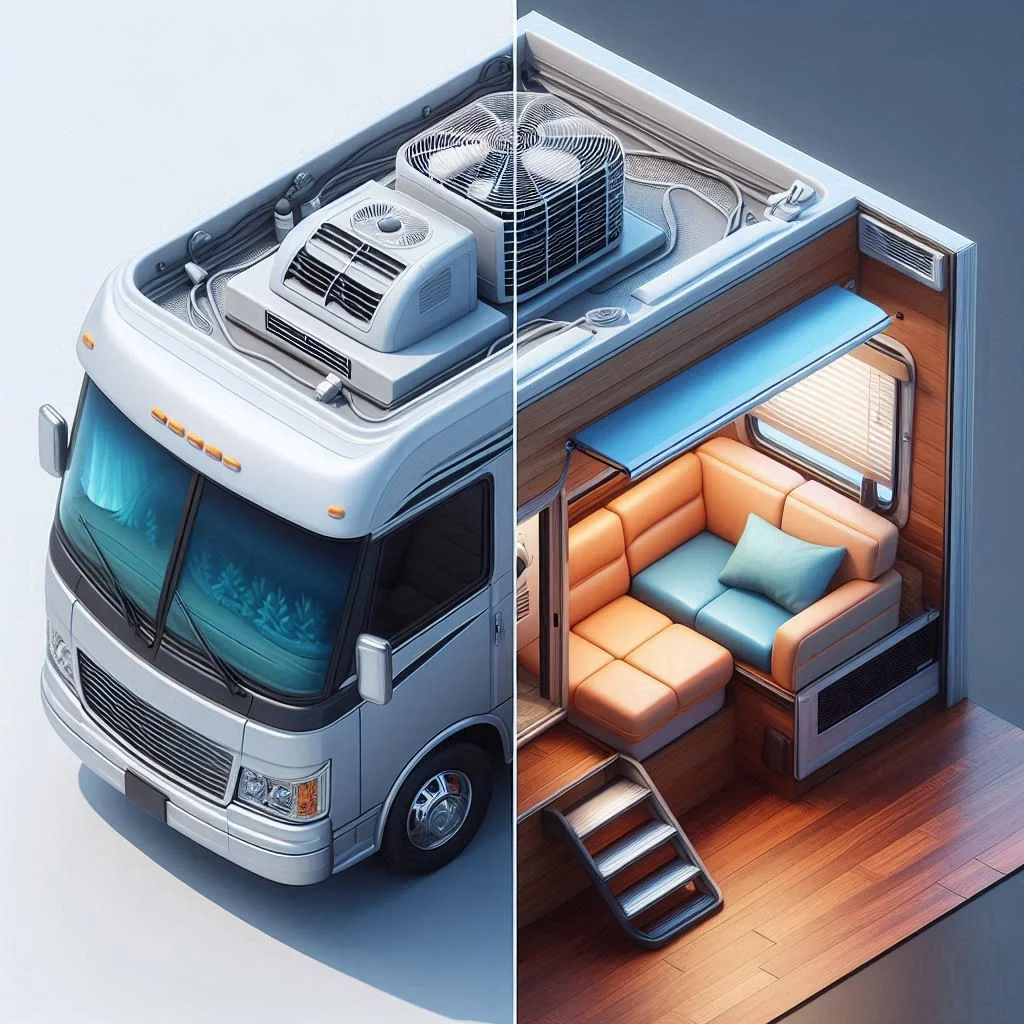
Battery-Powered and Solar-Powered Options
Battery-Powered Air Conditioners for Campers
Battery-powered air conditioners are ideal for campers who want a portable and energy-efficient cooling solution without relying on shore power or generators.
Key Benefits of Battery-Powered ACs:
✔ Great for Off-Grid Camping – No need for external power sources.
✔ Rechargeable Batteries – Can be charged via power banks or solar panels.
✔ Lightweight and Compact – Easy to carry and store.
Limitations of Battery-Powered ACs:
✖ Limited Run Time – Most models last only a few hours per charge.
✖ Lower Cooling Capacity – Best suited for small campers or personal use.
Solar-Powered Air Conditioners for Campers
Solar-powered air conditioners are an eco-friendly option for off-grid campers who want sustainable cooling solutions. These systems either run directly on solar panels or store power in a battery system for later use.
Benefits of Solar-Powered ACs:
✔ Renewable Energy Source – Reduces reliance on fuel-powered generators.
✔ Cost-Effective Over Time – Saves on electricity costs.
✔ Quiet and Environmentally Friendly – No emissions or noise pollution.
Challenges of Solar-Powered ACs:
✖ Requires High Initial Investment – Solar panels and battery storage can be expensive.
✖ Weather Dependent – Performance varies based on sunlight availability.
✖ Lower Cooling Power – Not as powerful as traditional AC units.
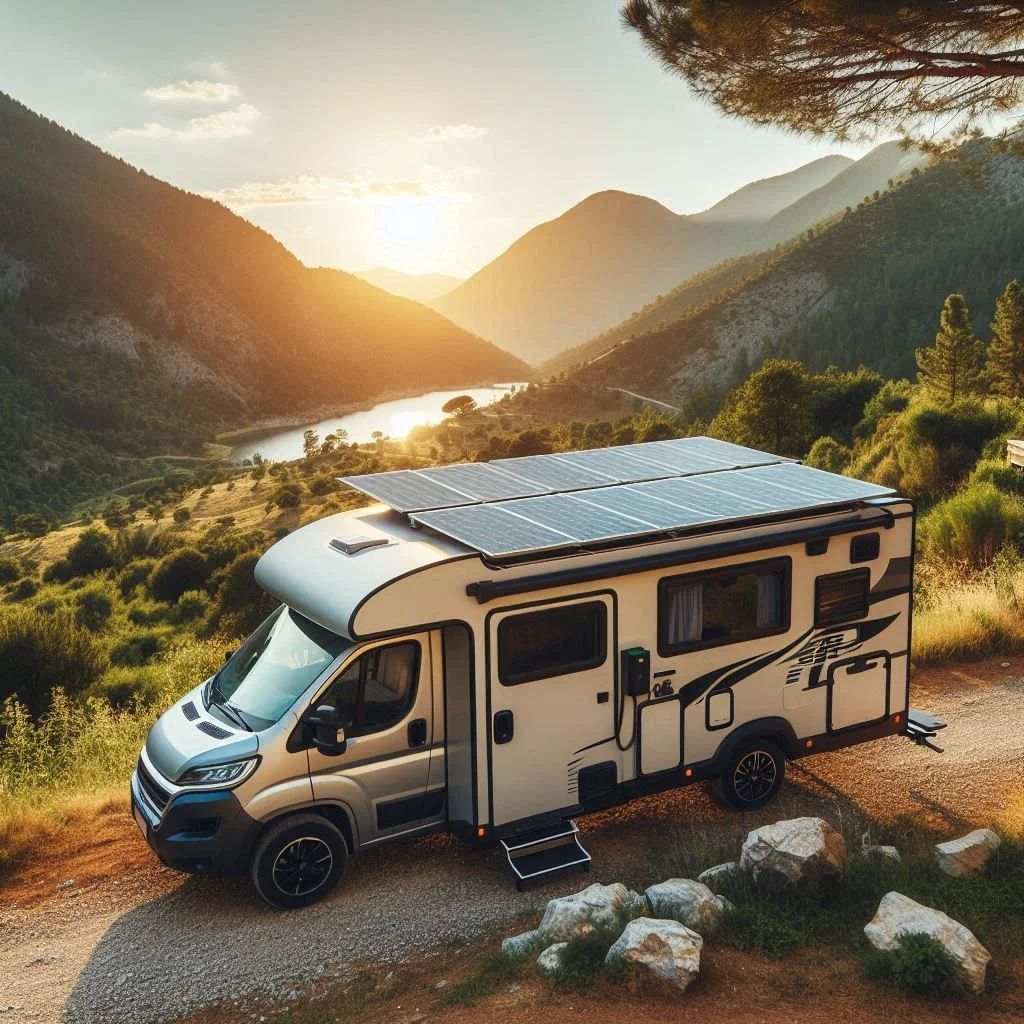
Final Thoughts
Choosing the right type of small air conditioner for your camper depends on your travel needs, power availability, and space constraints.
- Portable ACs are great for flexibility and ease of use.
- Rooftop ACs provide powerful cooling without taking up interior space.
- Window-mounted ACs balance efficiency and affordability.
- Battery-powered and solar-powered ACs are ideal for off-grid campers.
Top Smallest Air Conditioners for Campers in 2025
Choosing the smallest air conditioner for a camper in 2025 requires a balance between compact size, energy efficiency, and cooling power. As camping technology advances, modern AC units are designed to be lightweight, space-saving, and more eco-friendly.
This guide highlights the best lightweight and energy-efficient models, along with a detailed comparison of cooling capacity and power consumption to help you select the best AC unit for your camper.
Best Lightweight and Energy-Efficient Models
For camper owners, size and power efficiency are critical factors when choosing an air conditioner. The following models stand out in 2025 for their compact size, energy savings, and strong cooling performance.
1. Zero Breeze Mark 2
✅ Type: Portable, battery-powered
✅ Cooling Capacity: 2,300 BTU
✅ Power Consumption: 240W
✅ Weight: 16.5 lbs
✅ Ideal For: Small campers, off-grid camping
Why It’s a Great Choice:
- Runs on rechargeable batteries or can be powered via solar panels.
- Super lightweight and compact, making it easy to transport.
- Uses eco-friendly refrigerant with no emissions.
- Best suited for personal cooling or small camper spaces.
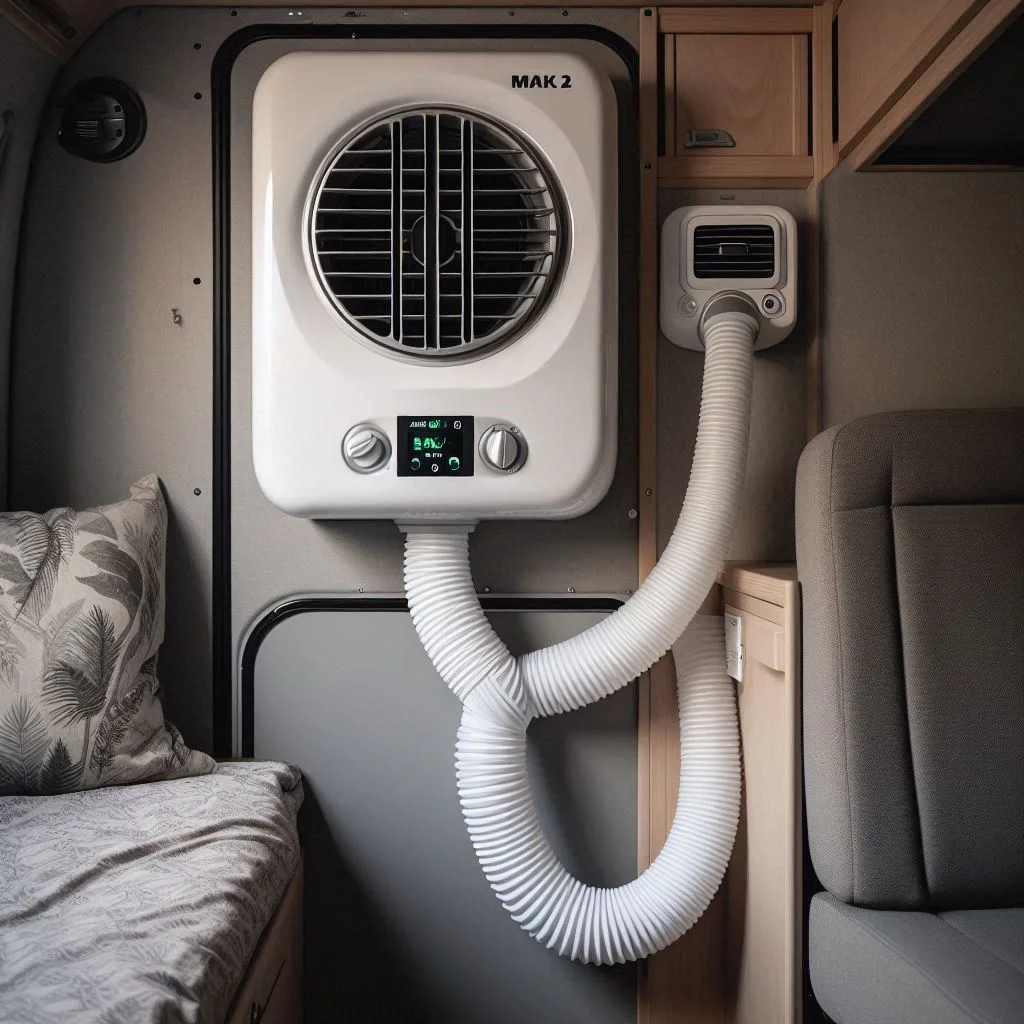
2. BougeRV 2899BTU Portable Air Conditioner
✅ Type: Portable, 12V DC-powered
✅ Cooling Capacity: 2,899 BTU
✅ Power Consumption: 150-250W
✅ Weight: 23 lbs
✅ Ideal For: Vans, small campers, and off-grid use
Why It’s a Great Choice:
- Works with 12V power sources, making it perfect for camper vans.
- Super energy-efficient, drawing minimal power from batteries.
- Features three cooling modes for customizable airflow.
- Compact and space-saving for small camper setups.
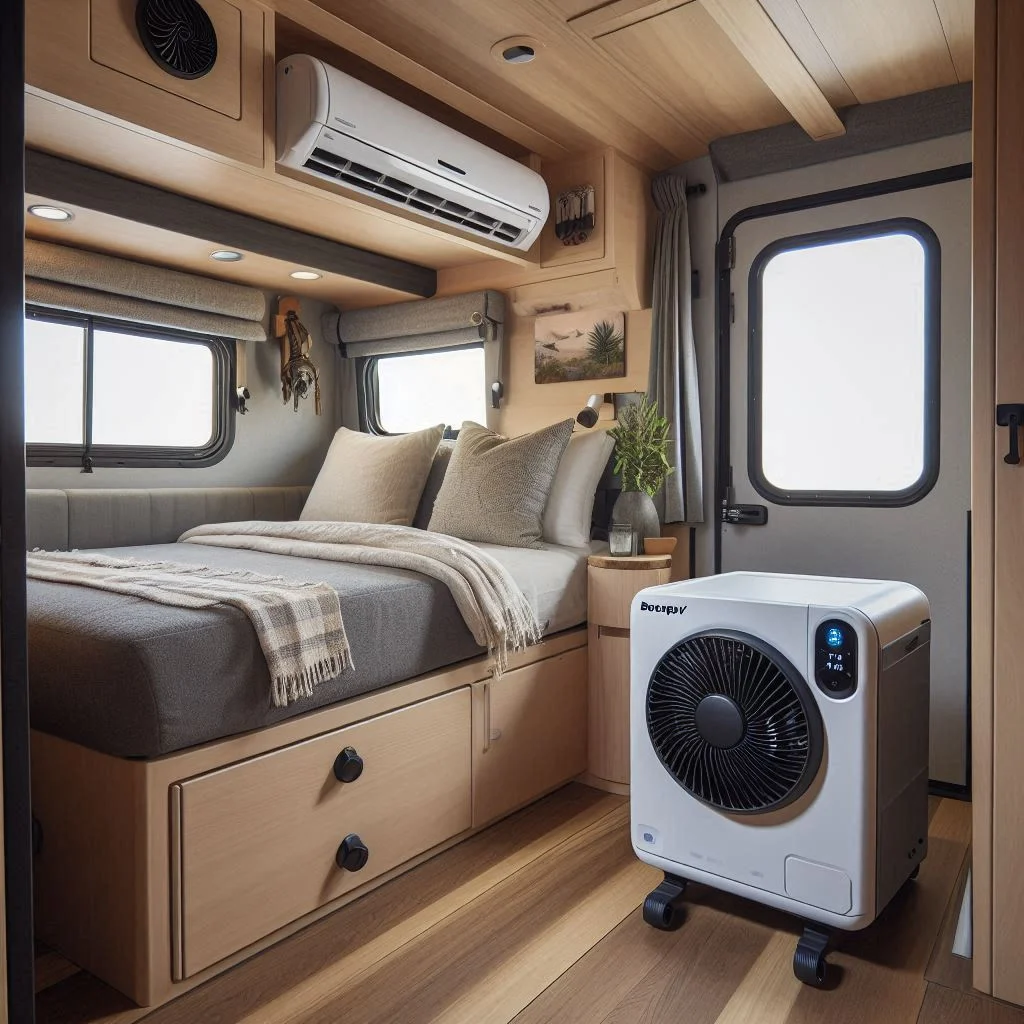
3. Dometic FreshJet 3 Series (Rooftop AC)
✅ Type: Rooftop, 120V-powered
✅ Cooling Capacity: 7,000 BTU
✅ Power Consumption: 700W
✅ Weight: 50 lbs
✅ Ideal For: Medium-sized campers, RVs, and trailers
Why It’s a Great Choice:
- Strong cooling power despite its compact design.
- Energy-efficient inverter technology reduces electricity use.
- Quiet operation, making it ideal for nighttime use.
- Space-saving rooftop installation keeps the interior uncluttered.
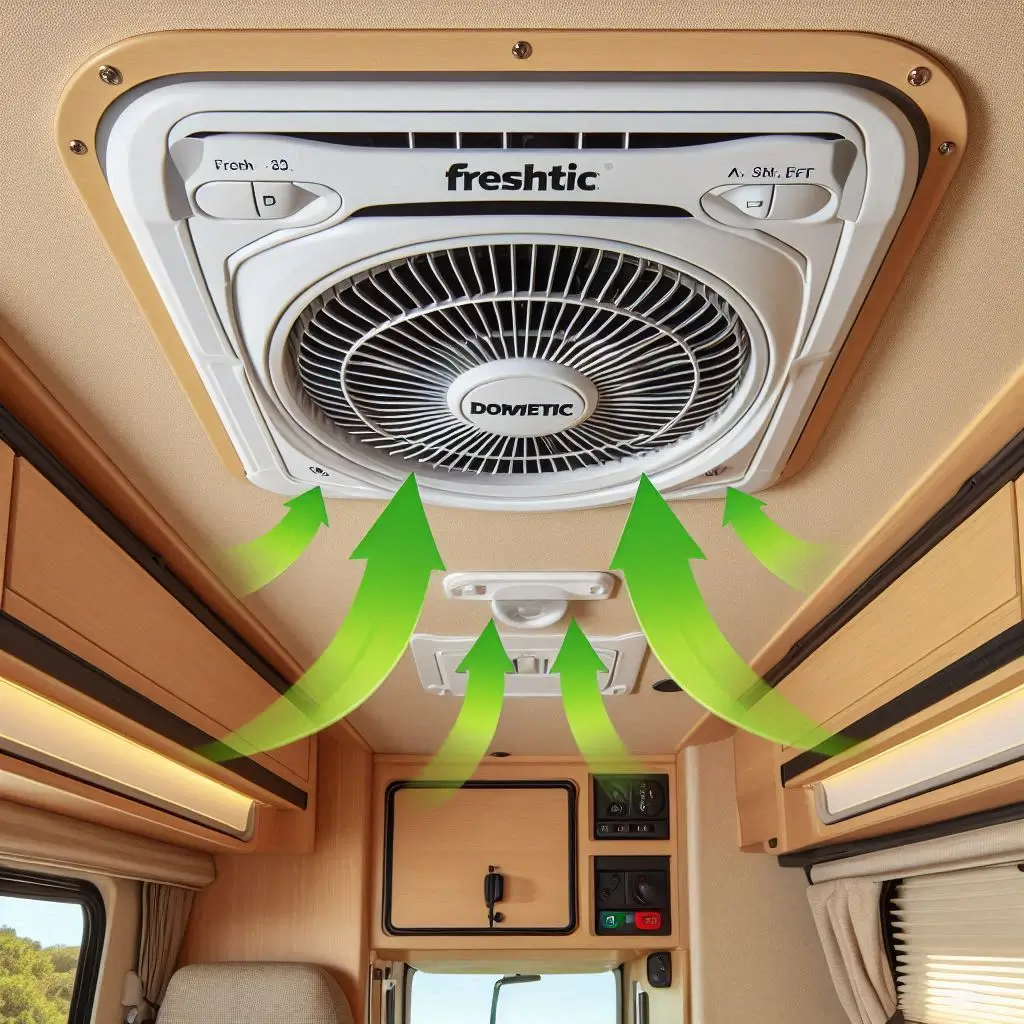
Comparison of Cooling Capacity and Power Consumption
To make an informed choice, here’s a breakdown of the cooling power vs. energy consumption of the top models:
| Model | BTU Cooling Capacity | Power Consumption | Weight | Best For |
|---|---|---|---|---|
| Zero Breeze Mark 2 | 2,300 BTU | 240W | 16.5 lbs | Small campers, off-grid camping |
| BougeRV 2899BTU | 2,899 BTU | 150-250W | 23 lbs | Vans, compact spaces |
| Dometic FreshJet 3 Series | 7,000 BTU | 700W | 50 lbs | Medium-sized campers |
Key Takeaways from the Comparison:
🔹 For off-grid camping – Zero Breeze Mark 2 is the best due to its battery-powered design.
🔹 For budget-friendly energy use – BougeRV is the most efficient with its 12V power support.
🔹 For larger cooling needs – Dometic FreshJet is the strongest but requires a 120V power connection.
By considering size, power consumption, and cooling performance, you can choose the best smallest air conditioner for a camper that meets your travel and camping needs.
Installation and Maintenance of a Small Camper Air Conditioner
A small camper air conditioner is essential for maintaining a comfortable interior temperature while traveling or camping in hot weather. However, proper installation and maintenance are crucial for ensuring optimal performance, energy efficiency, and long-term reliability.
This guide covers a step-by-step installation process and expert maintenance tips to help you get the most out of your compact camper AC unit.
Step-by-Step Guide to Installing a Compact AC
Installing a small air conditioner for a camper depends on the type of unit you choose—portable, rooftop, or window-mounted. Follow these steps to ensure a safe and efficient setup.
1. Selecting the Right Location
- Choose a well-ventilated spot to allow proper airflow.
- Ensure the unit is easily accessible for cleaning and maintenance.
- If installing a window-mounted AC, pick a sturdy window with secure mounting options.
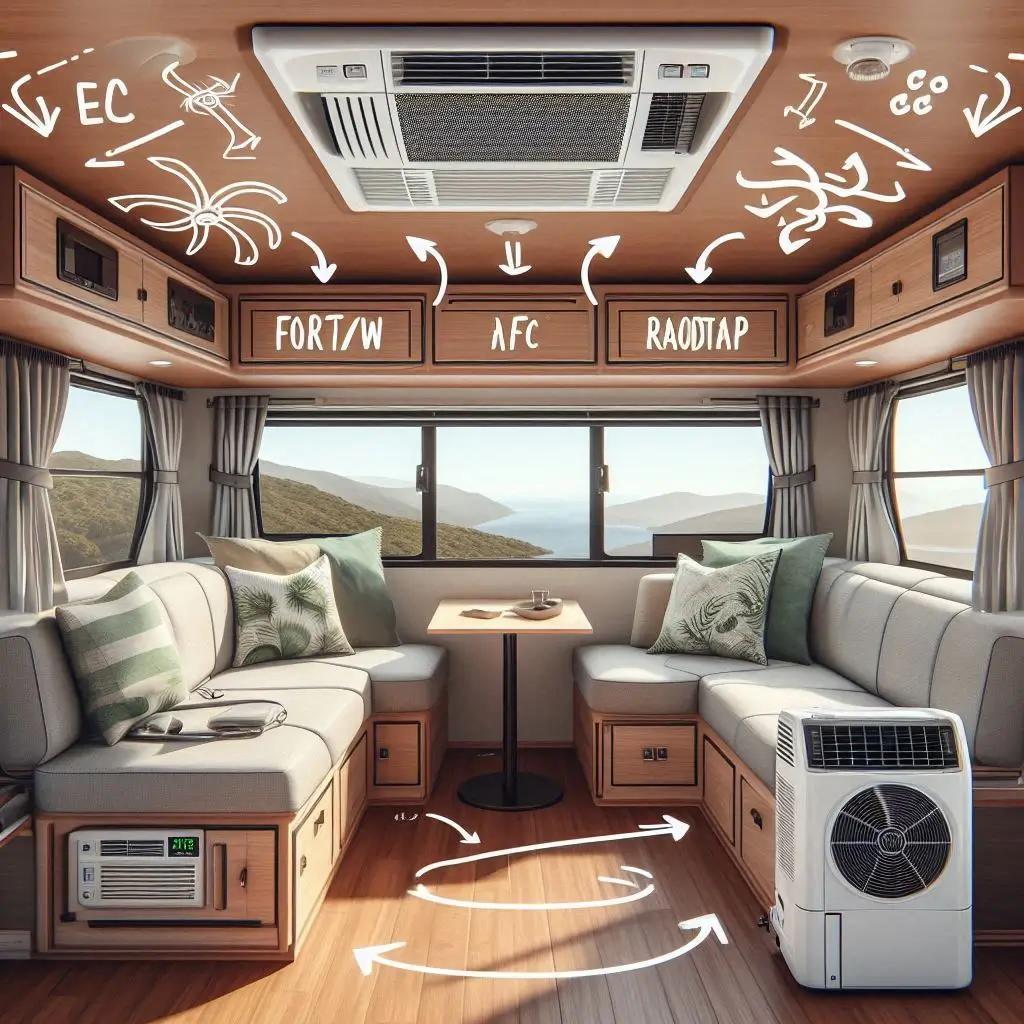
2. Preparing for Installation
- Check power requirements to ensure compatibility with your camper’s electrical system.
- Gather necessary tools, including a drill, screwdriver, sealing tape, and mounting brackets.
- For rooftop units, reinforce the mounting area to prevent leaks and vibration issues.
3. Installing a Portable Air Conditioner
- Place the AC unit on a stable surface.
- Attach the exhaust hose and direct it outside through a vent or window adapter.
- Seal any openings to prevent hot air from leaking back inside.
- Plug in the unit and test for proper cooling.
4. Installing a Window-Mounted AC
- Secure the AC unit on the window frame using mounting brackets.
- Use weather stripping to seal gaps and prevent outside air infiltration.
- Plug in the unit and adjust the settings for optimal cooling.
5. Installing a Rooftop AC
- Cut an opening in the designated roof area if one does not exist.
- Position the AC unit and secure it with screws and a mounting frame.
- Seal the edges with waterproof sealant to prevent leaks.
- Connect the electrical wiring according to the manufacturer’s instructions.
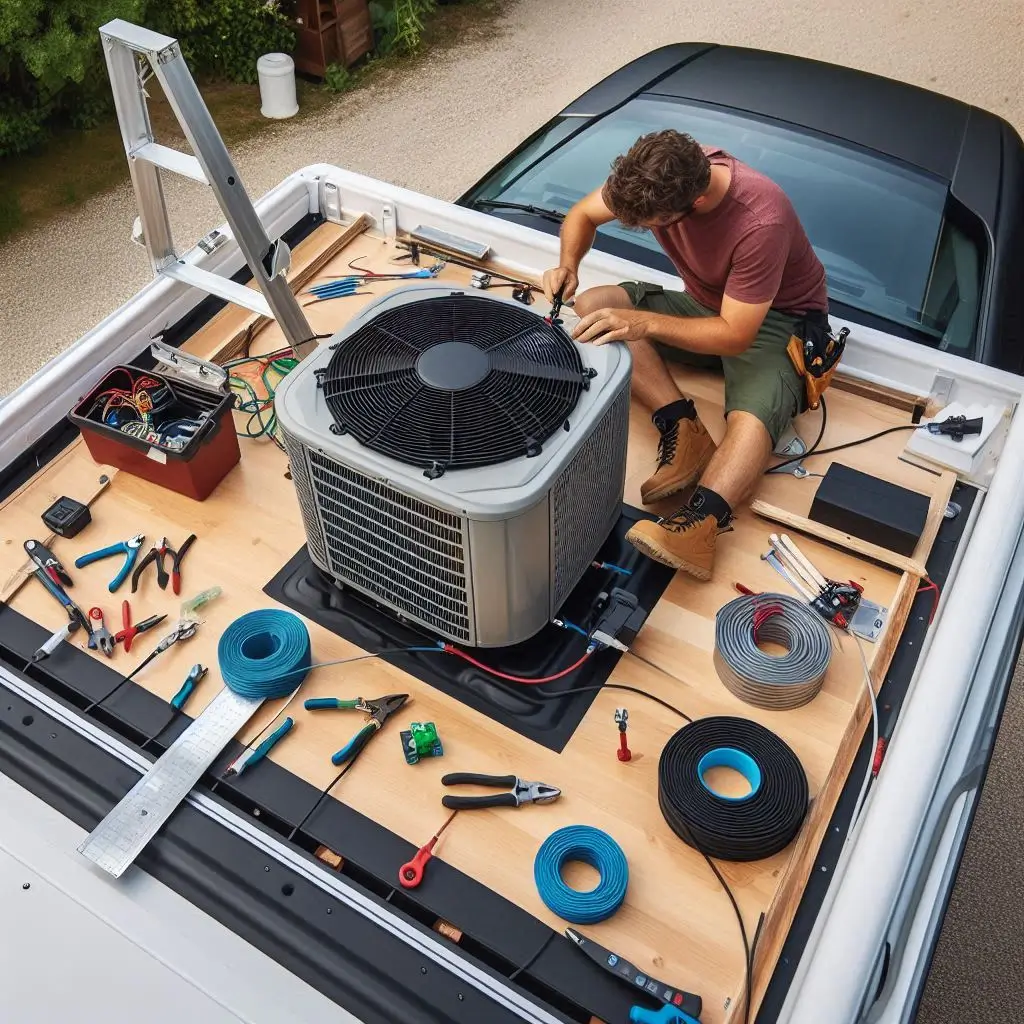
Tips for Maximizing Efficiency and Longevity
A well-maintained small camper air conditioner can last for years while maintaining its cooling performance. Follow these tips to improve efficiency and extend its lifespan.
1. Regular Cleaning and Filter Maintenance
- Clean or replace air filters every two to four weeks to ensure proper airflow.
- Use a vacuum or soft brush to remove dust from the condenser coils.
- Check for any debris blocking the ventilation ducts.
2. Monitor Power Usage
- Use an energy-efficient power source to reduce strain on the electrical system.
- Install a voltage regulator to prevent power surges from damaging the AC unit.
- When running off batteries or solar panels, ensure sufficient power capacity.
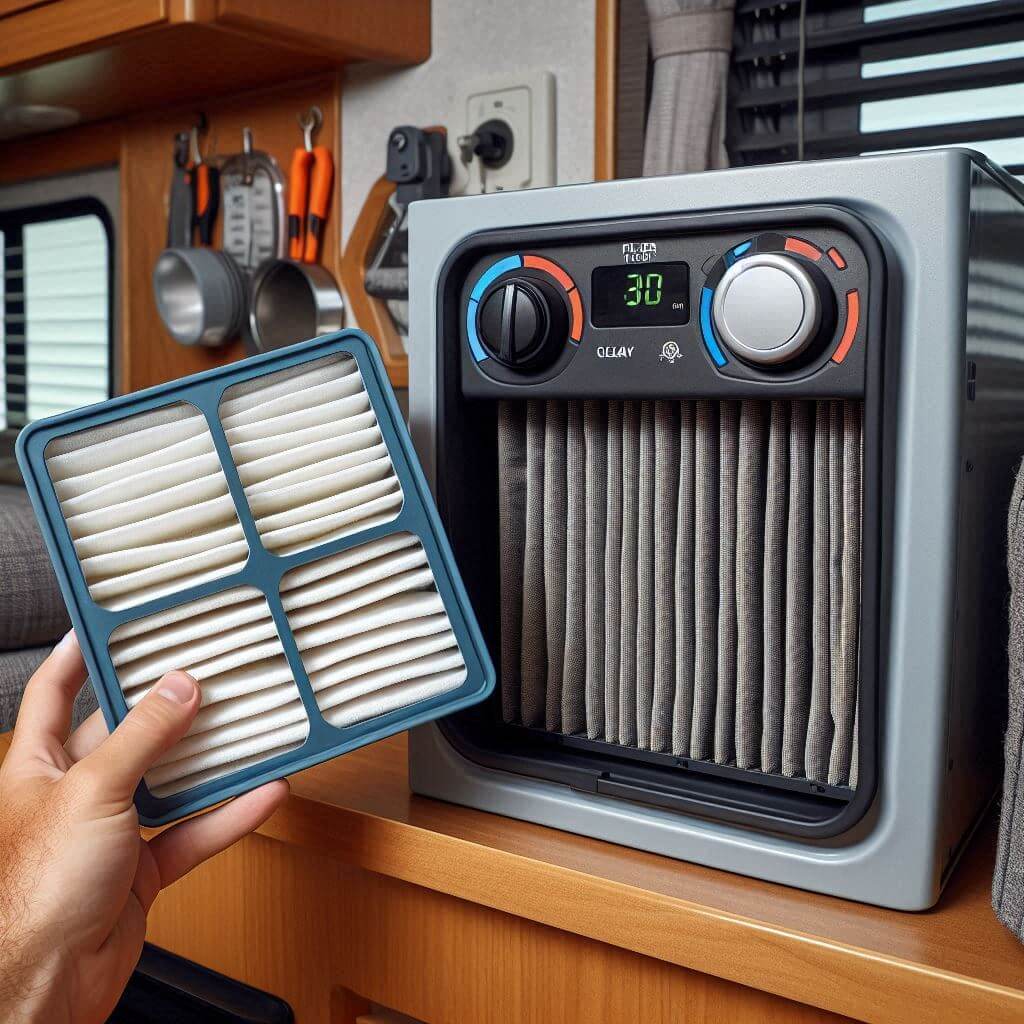
3. Proper Ventilation and Airflow
- Ensure no obstructions are blocking the airflow around the unit.
- Use reflective window covers to reduce heat buildup inside the camper.
- Position the AC’s exhaust hose or vents towards an open space to enhance cooling.
4. Preventive Maintenance Checks
- Inspect electrical connections for any loose wires or corrosion.
- Look for water leaks around rooftop AC installations.
- Run the unit at least once a month during off-seasons to keep internal components functional.
How to Choose the Right Small Air Conditioner for Your Camper
Selecting the right small air conditioner for your camper is essential to ensure a comfortable camping experience without excessive power consumption or space limitations. With various options available, it’s important to consider your camping needs, budget, and efficiency requirements.
This guide covers the key factors to consider and budget-friendly AC options that maintain high performance without sacrificing quality.
Factors to Consider Based on Your Camping Needs
Every camper has unique needs depending on travel style, power availability, and climate conditions. Here are the essential factors to consider before purchasing a small camper air conditioner.
1. Cooling Capacity and BTU Rating
- The cooling capacity of an air conditioner is measured in BTUs (British Thermal Units).
- A higher BTU rating means more cooling power but also higher energy consumption.
- For small campers, an AC unit with 2,000–5,000 BTUs is typically sufficient.
- Larger campers or hotter climates may require 6,000–8,000 BTUs.
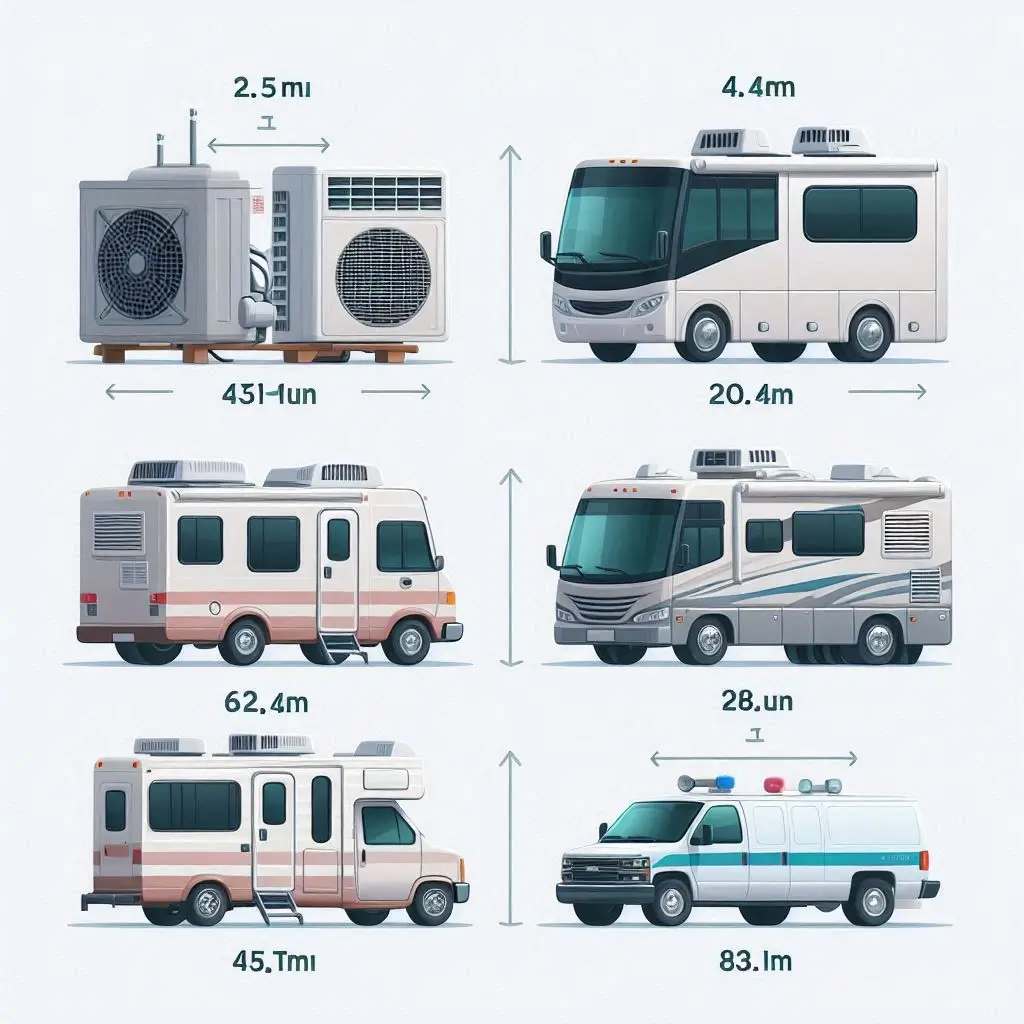
2. Power Source and Energy Efficiency
- Portable AC units often run on battery, 12V DC, or solar power, making them ideal for off-grid camping.
- Rooftop and window-mounted ACs typically require 120V shore power or a generator.
- Check for Energy Star-rated models that consume less power while maintaining strong cooling.
3. Space and Portability
- For small campers, compact or portable models save space and offer flexible installation.
- Rooftop units save interior space but require permanent installation.
- Window-mounted units provide powerful cooling but need a sturdy mounting point.
4. Noise Levels
- Quieter ACs, especially under 50 dB, are best for restful sleep.
- Portable battery-powered ACs tend to be quieter than traditional window or rooftop units.
5. Climate and Weather Conditions
- In humid climates, AC units with dehumidifier functions help reduce moisture buildup.
- In hot and dry regions, look for ACs with high-speed fans and efficient cooling cycles.
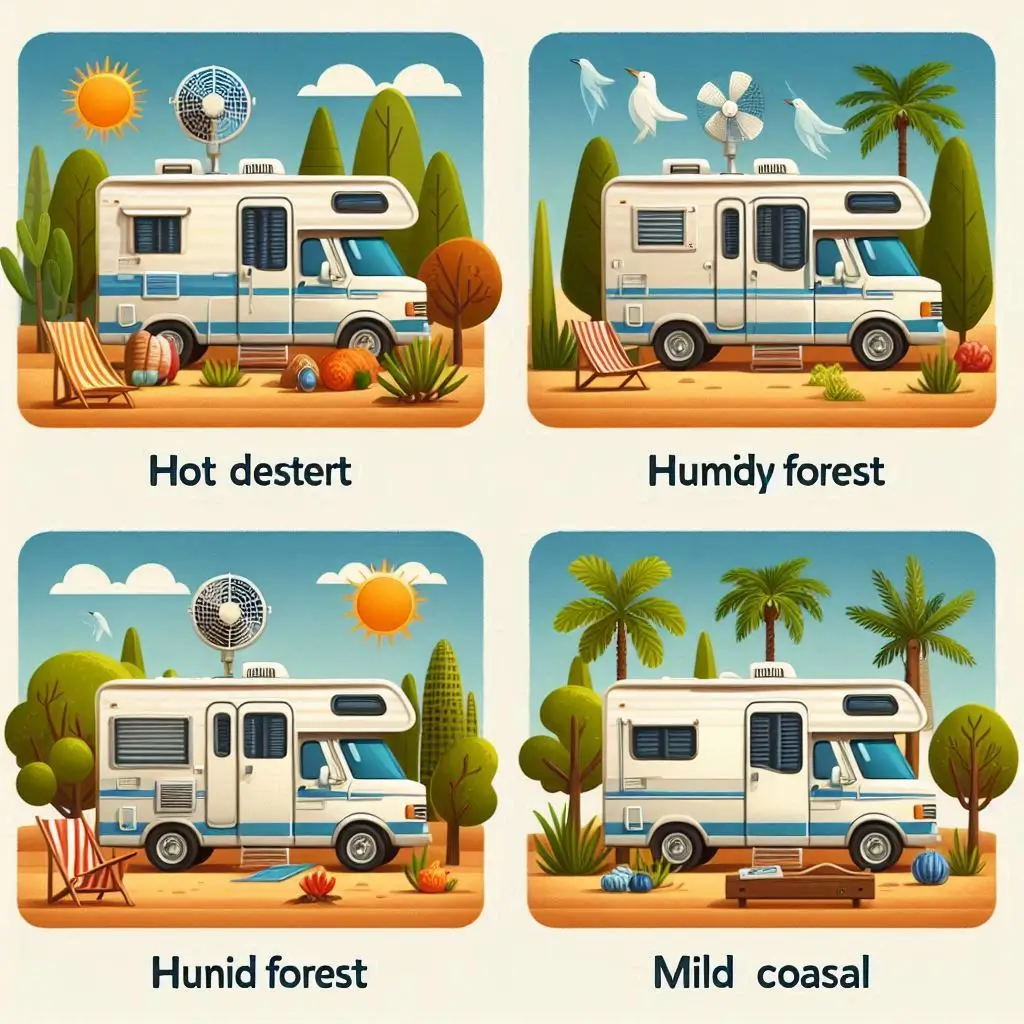
Budget-Friendly Options Without Sacrificing Quality
Finding a cost-effective yet reliable air conditioner ensures both comfort and affordability. Below are the best budget-friendly small camper ACs that offer high performance without breaking the bank.
1. Zero Breeze Mark 2 – Best for Off-Grid Camping
✅ Type: Portable, battery-powered
✅ Cooling Capacity: 2,300 BTU
✅ Price Range: $$$
✅ Best For: Solo travelers, vans, small campers
Why It’s Budget-Friendly:
- Battery-operated, eliminating the need for costly generators.
- Portable and lightweight, ideal for off-grid and boondocking.
- Low power consumption, saving on electricity costs.
2. BougeRV 2899BTU – Best for 12V DC Power Users
✅ Type: Portable, 12V-powered
✅ Cooling Capacity: 2,899 BTU
✅ Price Range: $$
✅ Best For: Vans, small campers, energy-conscious users
Why It’s Budget-Friendly:
- Runs directly on 12V DC power, saving money on additional power systems.
- Low energy draw, making it efficient for battery and solar use.
- Compact and durable design, reducing maintenance costs.
3. Midea U-Shaped Window AC – Best for Powerful Cooling
✅ Type: Window-mounted, 120V-powered
✅ Cooling Capacity: 8,000 BTU
✅ Price Range: $$
✅ Best For: Medium-sized campers, those with shore power access
Why It’s Budget-Friendly:
- Energy-efficient inverter technology reduces electricity usage.
- Quieter operation compared to traditional window units.
- Affordable compared to rooftop ACs while offering strong cooling power.
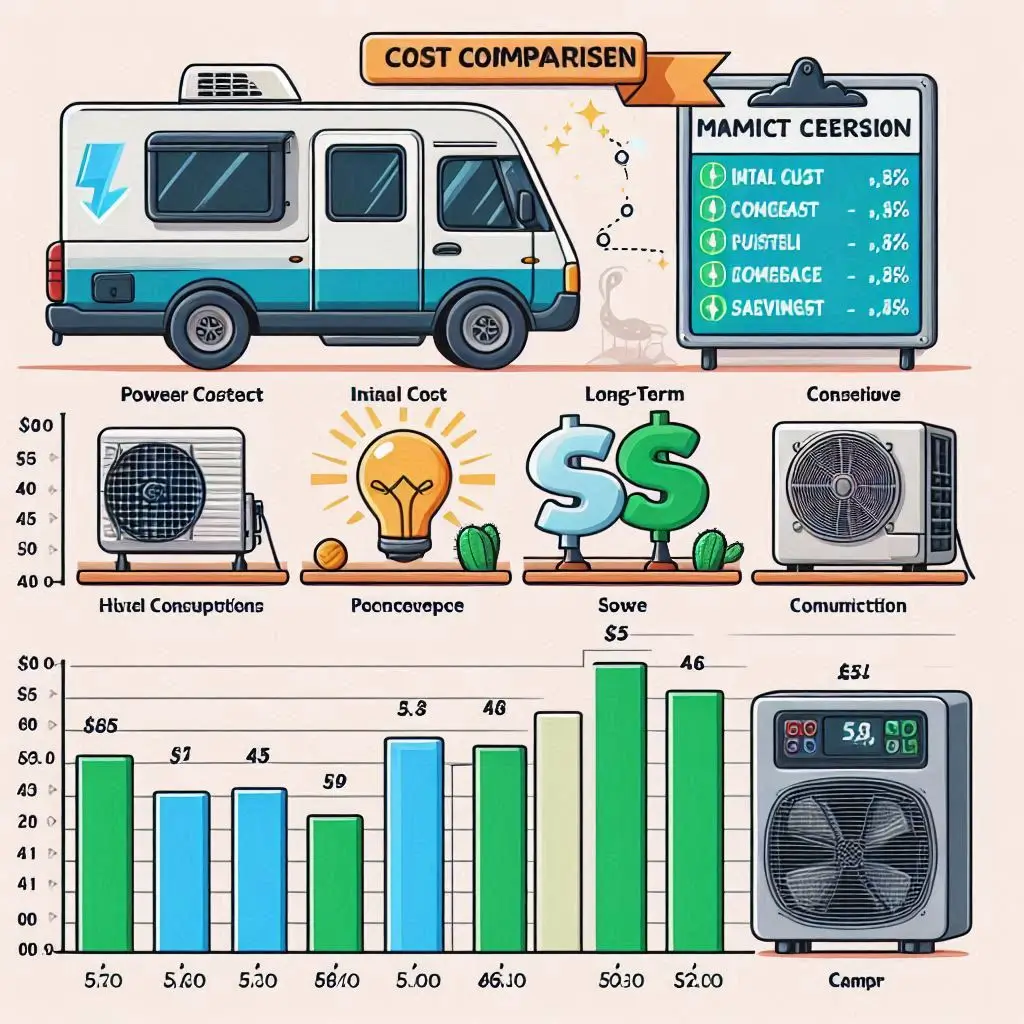
Final Thoughts
By evaluating BTU rating, power source, size, noise levels, and climate adaptability, you can find the best smallest air conditioner for your camper that meets your cooling needs while staying within budget.
For those seeking affordability and portability, battery and 12V-powered models offer great value. If you require stronger cooling for larger campers, window-mounted or rooftop units provide efficient solutions without excessive costs.
FAQs: Smallest Air Conditioner for Camper
Choosing the right small air conditioner for a camper comes with many questions about installation, efficiency, power consumption, and maintenance. Below are the most frequently asked questions to help you make an informed decision.
1. What is the smallest air conditioner available for a camper?
The smallest air conditioners for campers are typically portable battery-powered or 12V DC units. These models are lightweight, compact, and designed for small spaces.
Popular Small Camper ACs:
- Zero Breeze Mark 2 – Ultra-compact, battery-powered, 2,300 BTU.
- BougeRV 2899BTU – 12V-powered, efficient for small campers.
- Evapolar EvaCHILL – Personal evaporative cooler for tent camping and small vans.

2. How many BTUs do I need for a small camper air conditioner?
The right BTU rating depends on your camper’s size and insulation.
| Camper Size | Recommended BTU Range |
|---|---|
| Small campers (under 100 sq. ft.) | 2,000 – 5,000 BTU |
| Mid-sized campers (100-200 sq. ft.) | 5,000 – 8,000 BTU |
| Large campers (200+ sq. ft.) | 8,000 – 12,000 BTU |
Factors that affect BTU needs:
- Hot climates require a higher BTU rating for effective cooling.
- Well-insulated campers can manage with a lower BTU unit.
- Off-grid setups may need a low-power AC to conserve battery life.
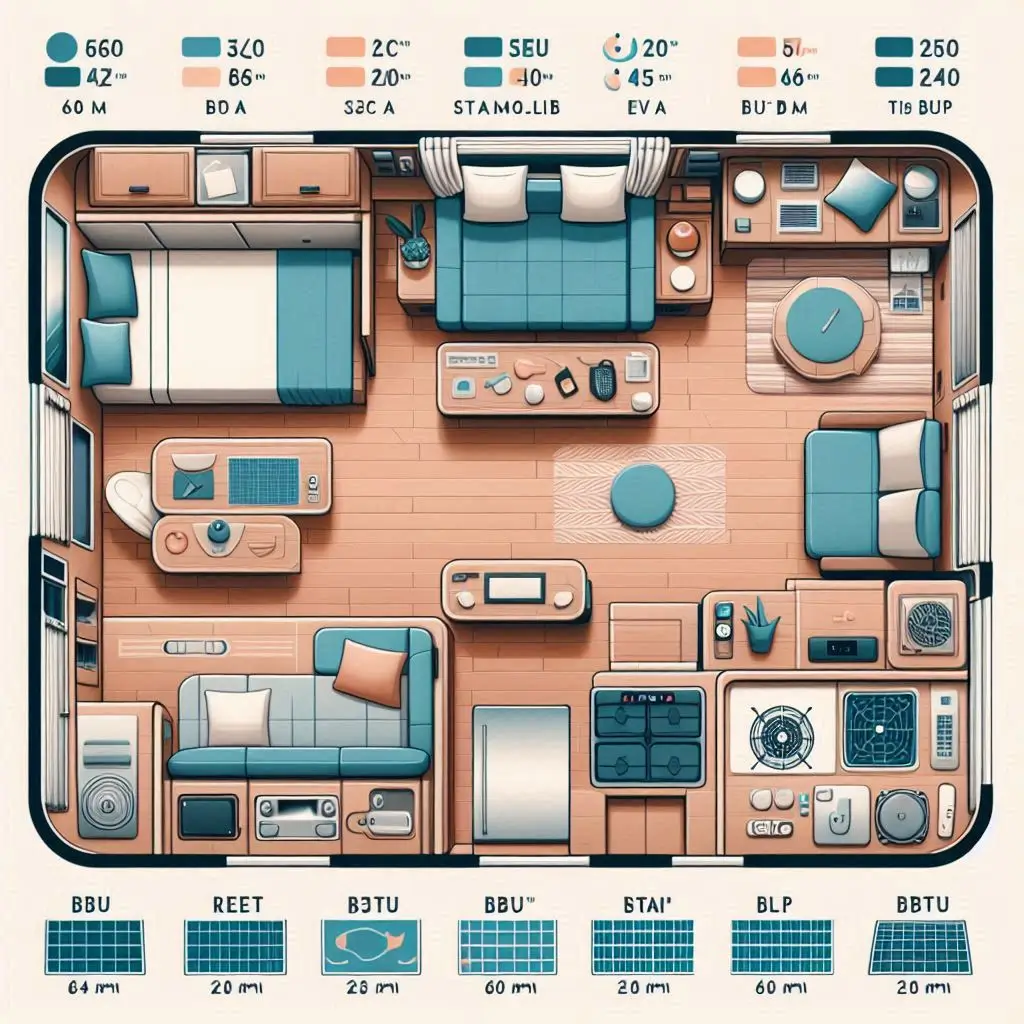
3. Can I run a small camper air conditioner on solar power?
Yes, but it depends on the AC type and power requirements.
Best AC Types for Solar Power:
✔ 12V DC air conditioners – Low energy draw, ideal for solar panels.
✔ Battery-powered portable ACs – Rechargeable via solar power banks.
✔ Energy-efficient inverter models – Reduce electricity consumption.
Solar Setup Requirements:
- A 100Ah lithium battery can run a 2,500 BTU AC for 3-5 hours.
- A 400W solar panel system is recommended for continuous use.
- Hybrid solar and generator systems help during cloudy days.
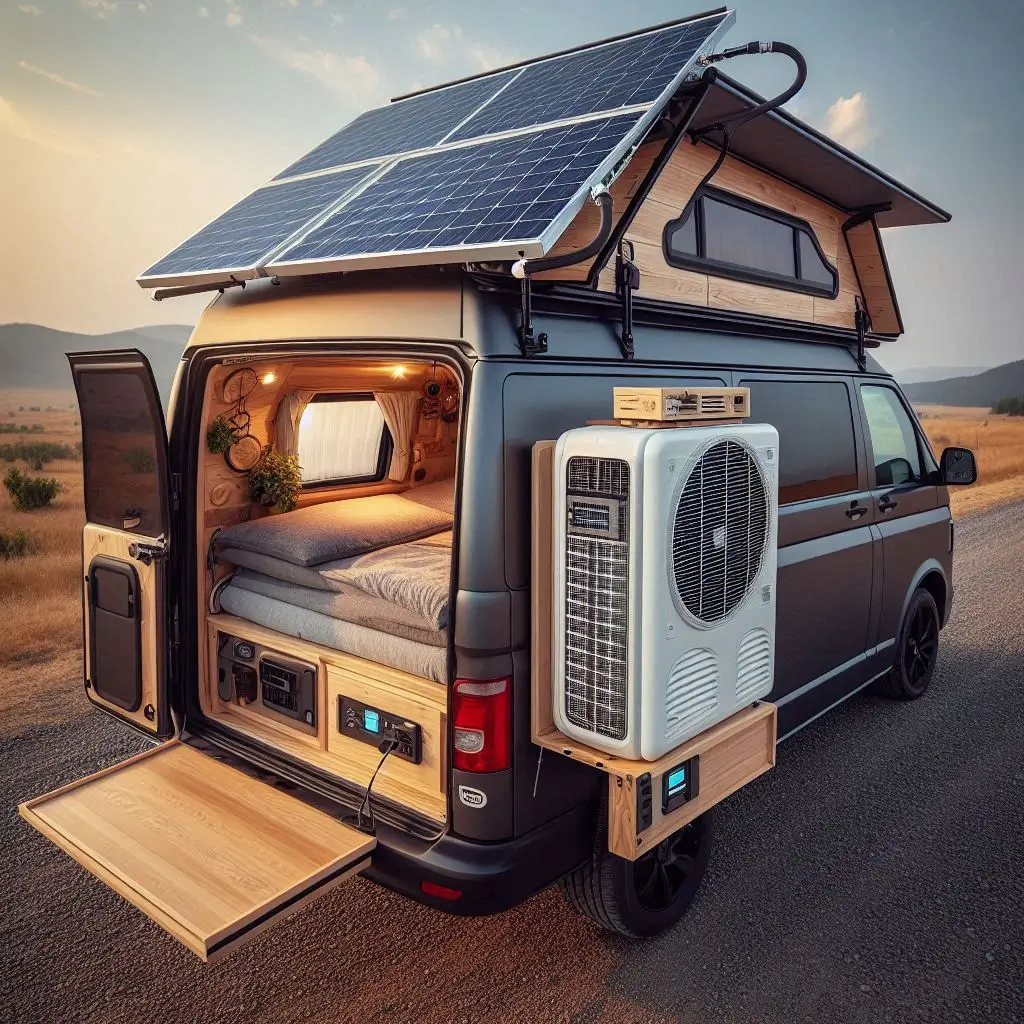
4. What is the best energy-efficient small air conditioner for a camper?
For maximum energy efficiency, look for AC units with inverter technology, low power consumption, and high SEER ratings.
Top Energy-Efficient AC Models:
- Zero Breeze Mark 2 (Battery-powered, 2,300 BTU, ultra-efficient).
- Midea U-Shaped Window AC (Inverter technology, 8,000 BTU).
- Dometic RTX 2000 (Rooftop 12V AC, designed for off-grid use).
5. How do I maintain my small camper air conditioner?
Regular maintenance ensures optimal performance and longevity.
Essential Maintenance Tips:
✔ Clean the air filter every 2-4 weeks to prevent dust buildup.
✔ Check for leaks in the exhaust hose or rooftop AC unit.
✔ Inspect electrical connections for any loose or corroded wires.
✔ Run the AC periodically during off-seasons to prevent motor issues.
By following these maintenance steps, your small camper air conditioner will last longer and run more efficiently.
Final Thoughts
Finding the best smallest air conditioner for a camper requires considering BTU ratings, energy efficiency, power source, and installation type. Whether you’re camping off-grid or need a powerful cooling solution, there’s a compact AC unit that meets your needs.
By choosing solar-friendly models, portable ACs, or energy-efficient window units, you can enjoy a comfortable camping experience without excessive energy costs.
Conclusion
In conclusion, selecting the right smallest air conditioner for your camper is crucial for ensuring a comfortable and enjoyable camping experience. With a variety of options available, from portable battery-powered units to energy-efficient rooftop models, it’s important to consider factors such as cooling capacity, power source, and maintenance requirements. By understanding your unique camping needs and budget constraints, you can choose an air conditioner that provides optimal cooling without sacrificing quality or efficiency. Whether you’re planning a weekend getaway or an extended road trip, investing in the right camper AC will enhance your adventures and keep you cool in even the hottest conditions. With the right knowledge and preparation, you can enjoy a refreshing and comfortable camping experience wherever your travels take you.

